Sloping Garden Ideas
Sloping Garden Ideas
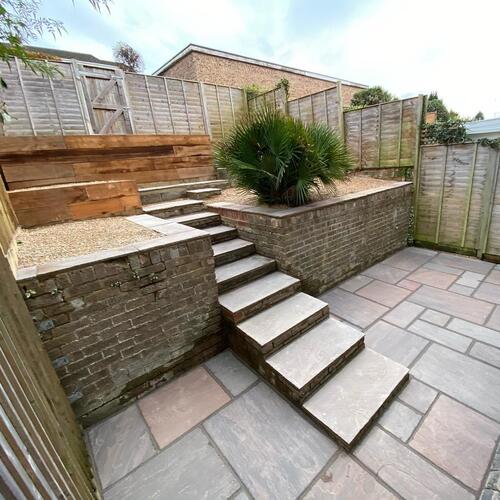
A sloping garden is a garden or landscape that is inclined rather than flat. The slope can vary from gentle to steep and can affect how the garden is designed, planted, and maintained. The gradient of the slope introduces unique challenges and opportunities for creating visually appealing and functional outdoor spaces.
Some key characteristics of a Sloping Garden include:
- Inclined Terrain: The defining feature of a sloping garden is its inclined surface, which can range from a gentle slope to a steep hillside.
- Varied Elevation: Different areas of the garden will be at different heights, creating natural terraces or levels.
- Drainage Patterns: Water naturally flows downhill, affecting soil moisture and drainage patterns throughout the garden.
- Erosion Potential: The incline can lead to soil erosion if not properly managed, particularly during heavy rain.
- Microclimates: The varying elevations and orientations can create microclimates, with some areas receiving more sunlight and others being more shaded.
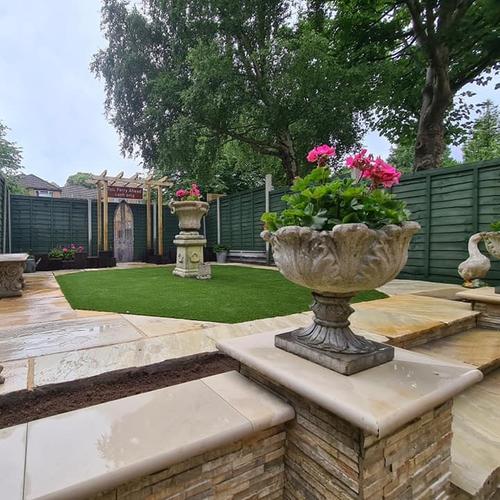
Sloping Garden In Your Property
Terracing
Multiple Levels: Break up the slope into a series of flat terraces supported by retaining walls. Each level can have its own distinct theme or function.
Retaining Walls: Use materials like stone, brick, or wood to build sturdy retaining walls. They can also serve as seating areas.
Steps and Pathways
Stone Steps: Integrate natural stone steps that blend with the landscape. This not only provides access but also adds a rustic charm.
Winding Pathways: Create meandering paths that lead the eye through the garden, making the slope feel less steep and more inviting.
Planting Beds
Layered Planting: Plant in tiers, with taller plants at the top and shorter plants at the bottom. This creates a lush, cascading effect.
Erosion Control Plants: Use ground covers, shrubs, and perennials that help hold the soil in place and prevent erosion.
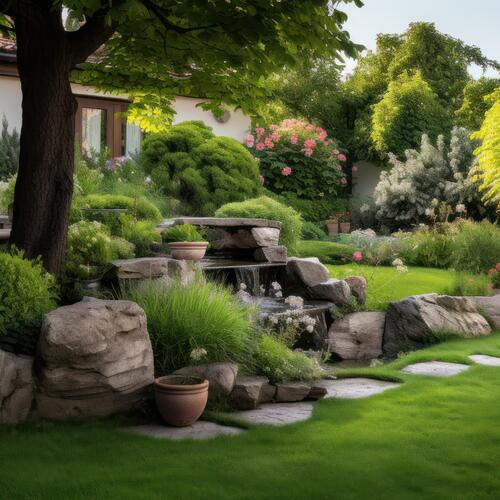
Water Features
Waterfalls: Utilize the slope to create a natural waterfall, which can be a stunning focal point.
Stream: Design a small stream that flows down the slope, adding a sense of tranquility and movement.
Rock Gardens
Naturalistic Rock Gardens: Place rocks and boulders to create naturalistic rock gardens. Fill the spaces with alpine plants, succulents, and other rock garden plants.
Boulder Steps: Use large boulders as steps and planting pockets, combining function with aesthetics.
Decking and Platforms
Raised Deck: Construct a raised deck or platform to create a flat area for seating or dining while enjoying elevated views.
Multi-Level Decking: Build decks at various heights to provide multiple vantage points and seating areas.
Retaining Wall Seating
Built-In Benches: Incorporate seating into retaining walls. This saves space and adds functionality.
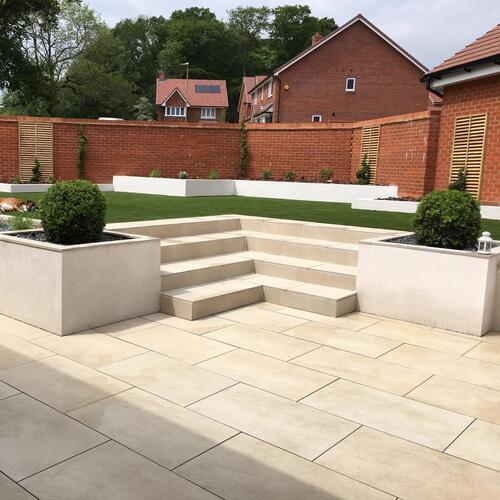
Terraced Seating Areas: Create terraced seating areas for different perspectives and cozy corners.
Vegetable and Herb Gardens
Tiered Vegetable Beds: Use terracing to create tiered vegetable and herb beds. This maximizes space and ensures good drainage.
Raised Beds: Install raised beds along the slope for easier access and better soil control.
Wildlife Habitats
Wildflower Meadows: Plant native wildflowers and grasses to create a natural, low-maintenance meadow that attracts wildlife.
Bird and Insect-Friendly Plants: Choose plants that provide nectar, seeds, and shelter for birds and beneficial insects.
Outdoor Living Spaces
Fire Pit Area: Design a sunken fire pit area surrounded by seating, making use of the natural slope for a cozy gathering spot.
Outdoor Kitchen: Build an outdoor kitchen or barbecue area on a level terrace, combining cooking with outdoor entertaining.
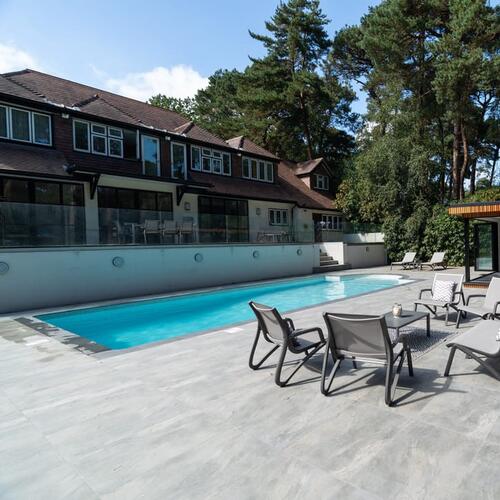
Artistic Elements
Sculpture and Art: Place sculptures, garden art, or decorative elements strategically throughout the slope to add interest and focal points.
Mosaic Steps: Create mosaic designs on steps or walls to add a personal and artistic touch.
Lighting
Path Lighting: Use low-voltage lighting along pathways and steps to ensure safety and create a magical ambiance at night.
Spotlights: Highlight key features like water elements, sculptures, and trees with spotlights.
Green Walls
Vertical Gardens: Install green walls or vertical gardens on retaining walls to add greenery without taking up ground space.
Climbing Plants: Grow climbing plants like ivy, clematis, or roses on trellises or walls to soften hard structures and add vertical interest.
Play Areas
Play Zones: Design terraced play areas for children, incorporating elements like slides, swings, and climbing walls.
Adventure Trails: Create adventure trails with different levels of difficulty, integrating natural features like logs and rocks.
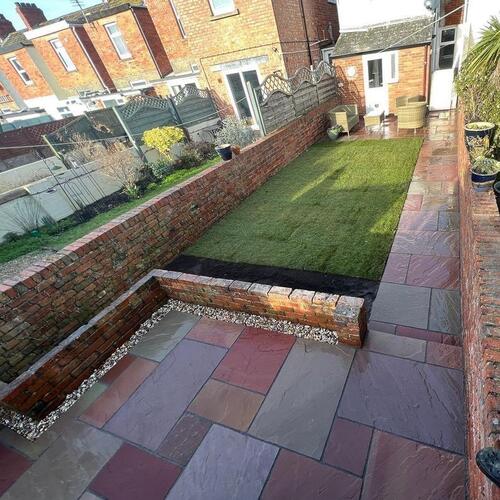
Pros and Cons of a Sloping Garden
Pros
Dynamic Landscapes: Slopes naturally create more dynamic and visually interesting landscapes compared to flat gardens.
Panoramic Views: Elevated areas can offer beautiful panoramic views, making the garden feel more expansive and open.
Creative Design Opportunities
Terracing: The ability to create terraces can add structure and variety to the garden, making it possible to develop distinct zones or themes.
Water Features: Slopes are ideal for incorporating water features like waterfalls and streams, which can enhance the garden’s tranquillity and beauty.
Drainage
Improved Drainage: Sloping gardens generally have better natural drainage, which can prevent waterlogging and related plant diseases.
Unique Planting Options
Microclimates: Different levels and orientations can create microclimates, allowing for a diverse range of plants that might not thrive in a flat garden.
Erosion Control Planting: Planting on a slope encourages the use of ground covers and deep-rooted plants that stabilize the soil and prevent erosion.
Increased Property Value
Distinctive Feature: A well-designed sloping garden can be a distinctive feature that enhances the overall appeal and value of a property.
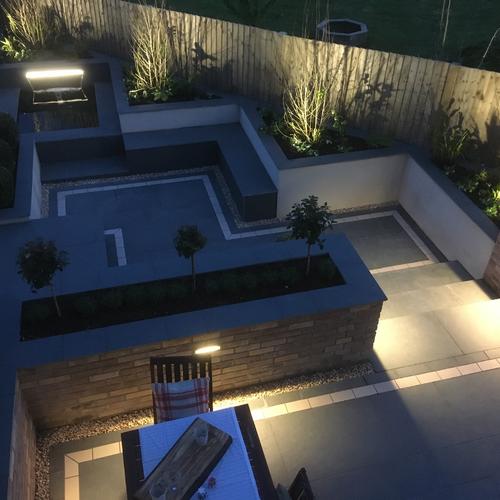
Cons
Technical Challenges: Designing and constructing a sloping garden requires careful planning and often professional help to address issues like soil stability, erosion control, and proper terracing.
Higher Costs: The need for retaining walls, steps, and other structural elements can make the project more expensive compared to a flat garden.
Maintenance Challenges
Accessibility: Maintaining a sloping garden can be more difficult, especially for tasks like mowing, weeding, and planting, due to the uneven terrain.
Erosion: Slopes are prone to erosion, especially in heavy rain, which can wash away soil and plants if not properly managed.
Usability
Limited Flat Areas: Finding or creating usable flat spaces for activities such as outdoor dining, children’s play areas, or lawn games can be challenging.
Safety Concerns: Steeper slopes can pose safety risks, particularly for children, the elderly, and pets.
Plant Selection
Plant Compatibility: Not all plants are suitable for sloping gardens. Careful selection is needed to ensure that plants can thrive on a slope and help prevent soil erosion.
Water Management
Irrigation Issues: Effective irrigation can be challenging on a slope, as water may run off before it has a chance to soak into the soil, necessitating the use of drip irrigation systems or other water management techniques.

